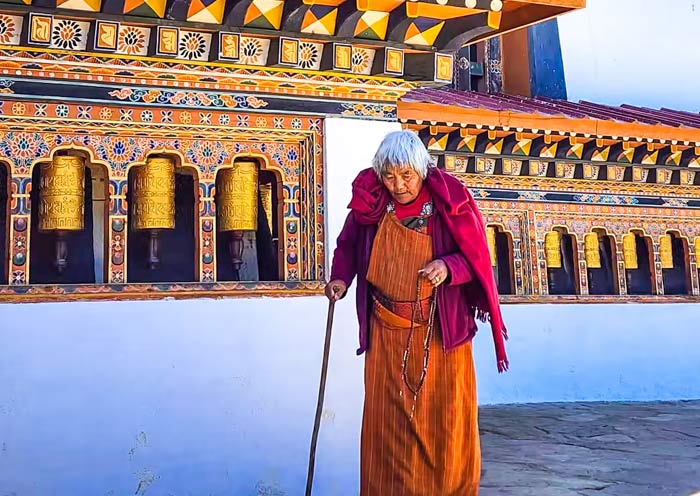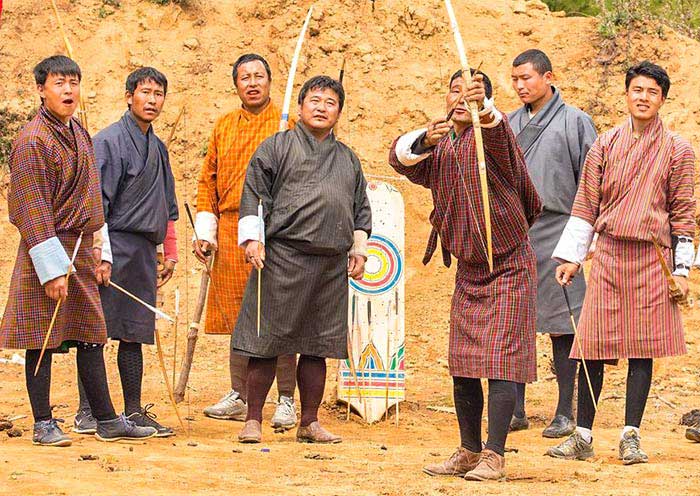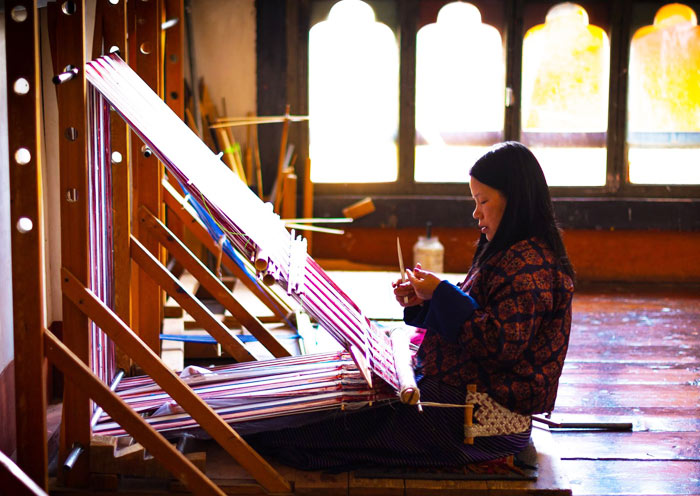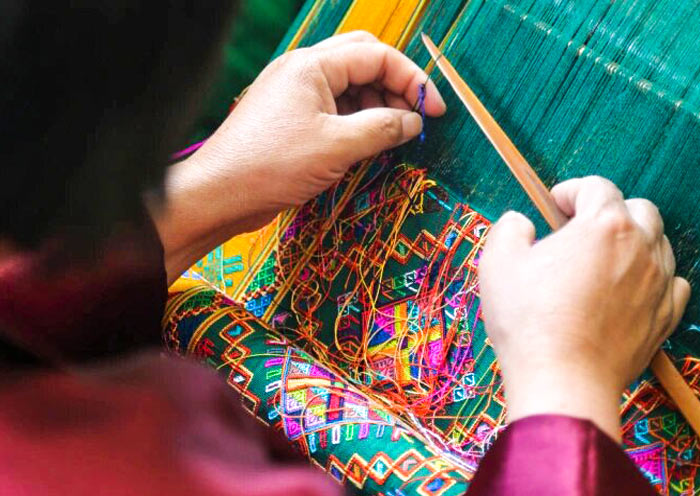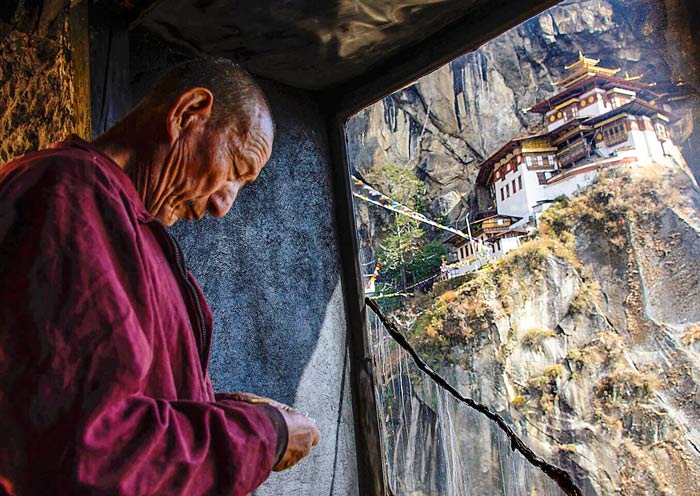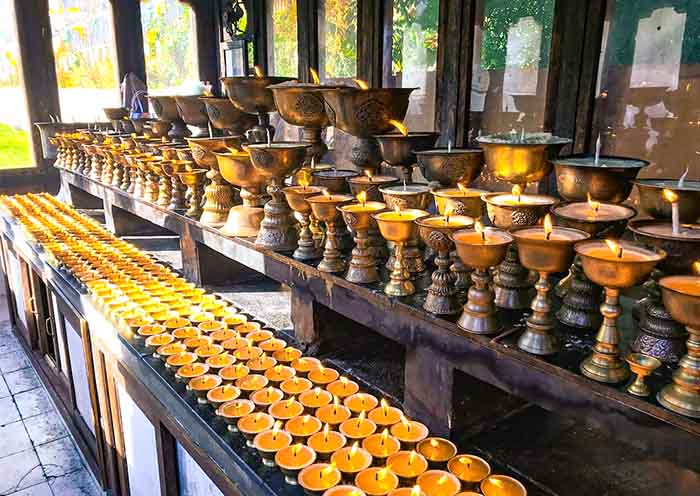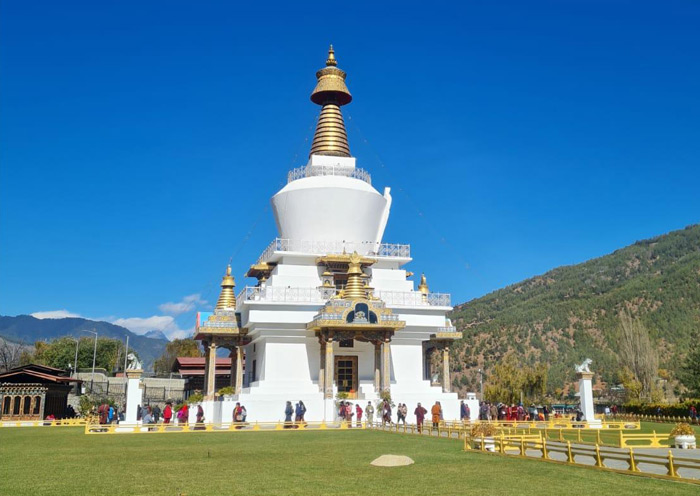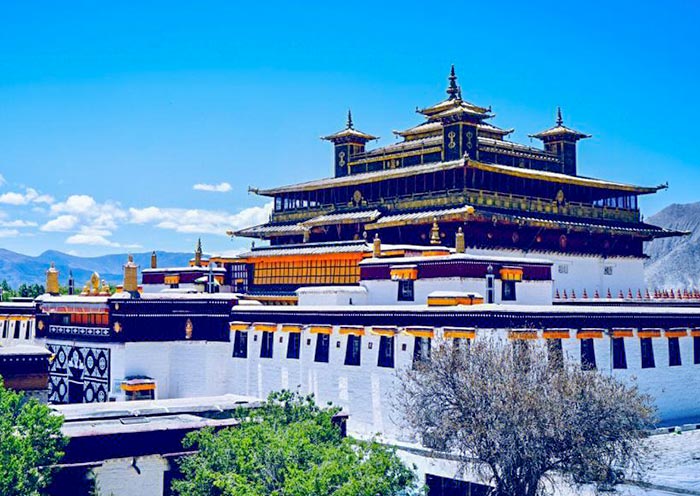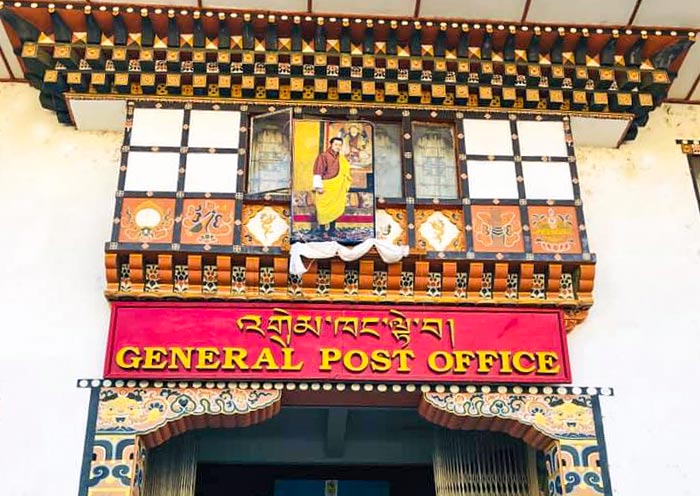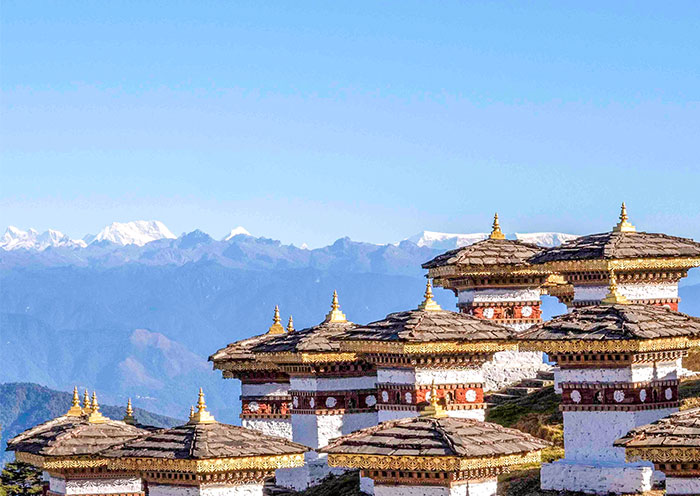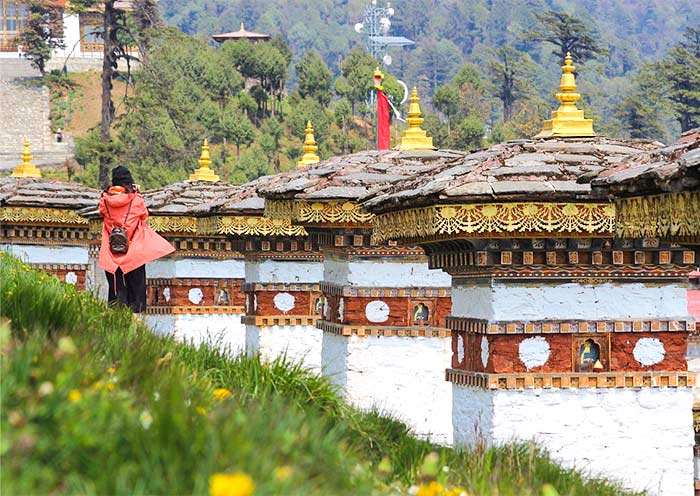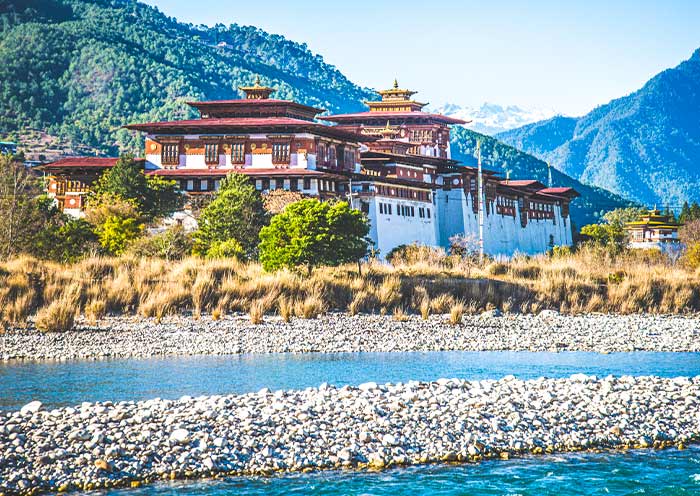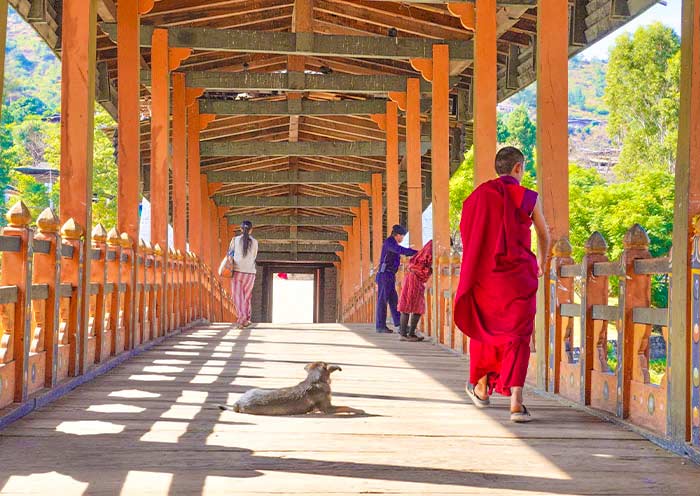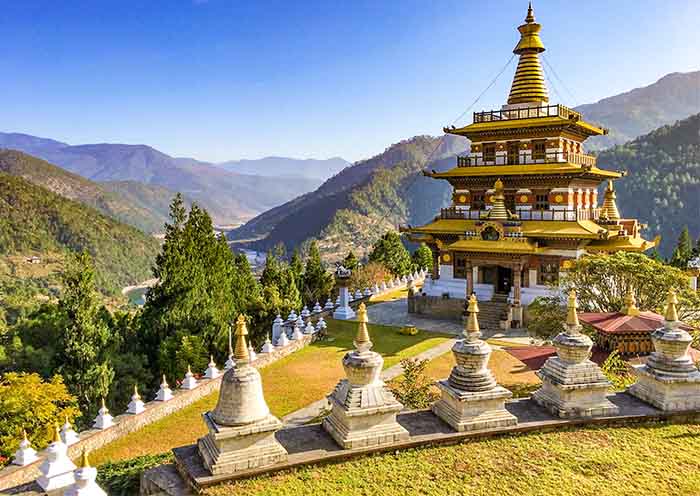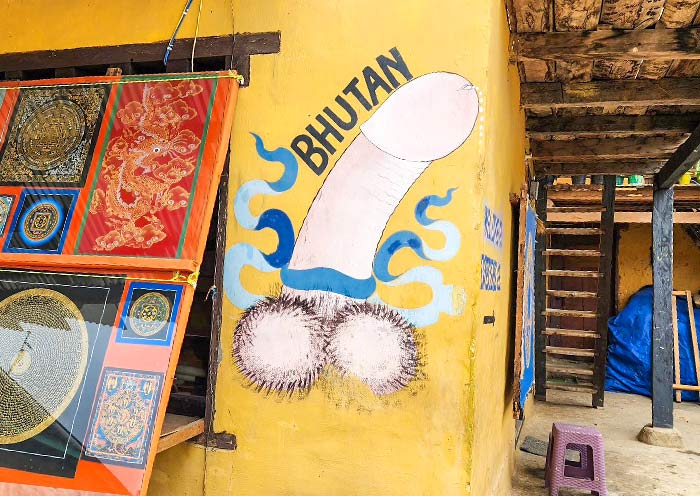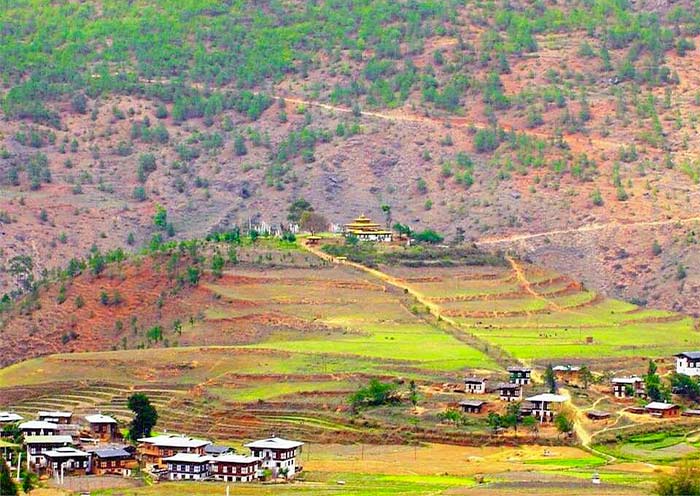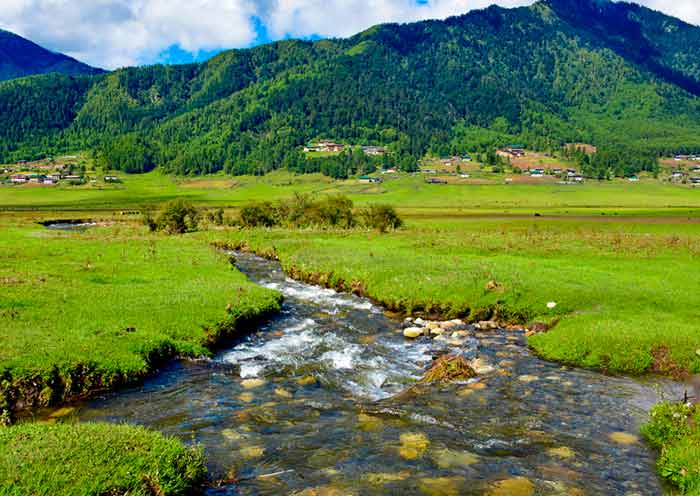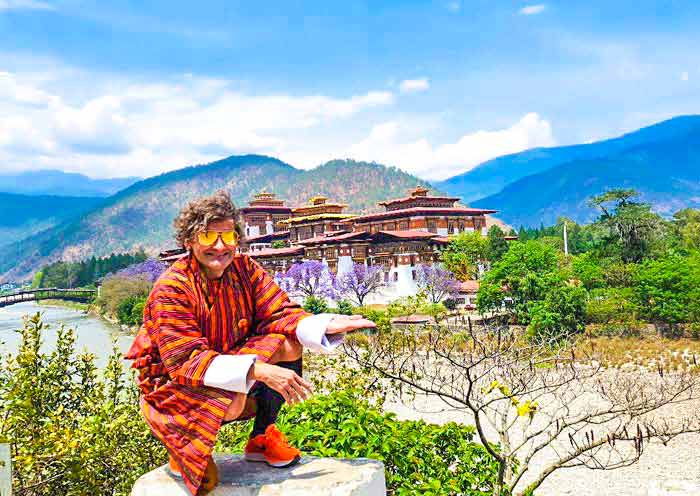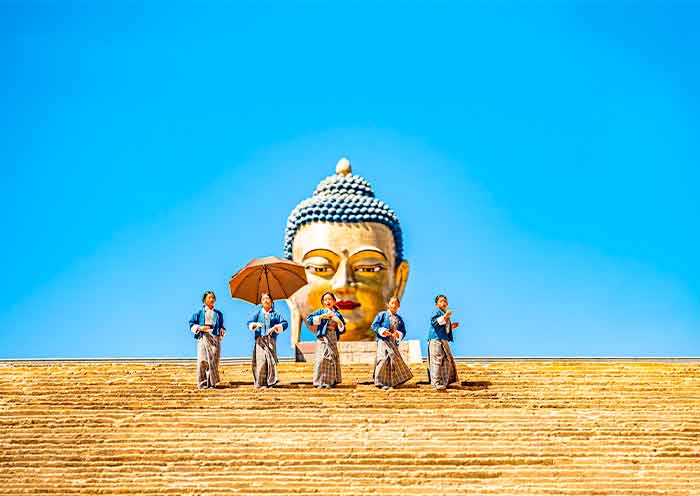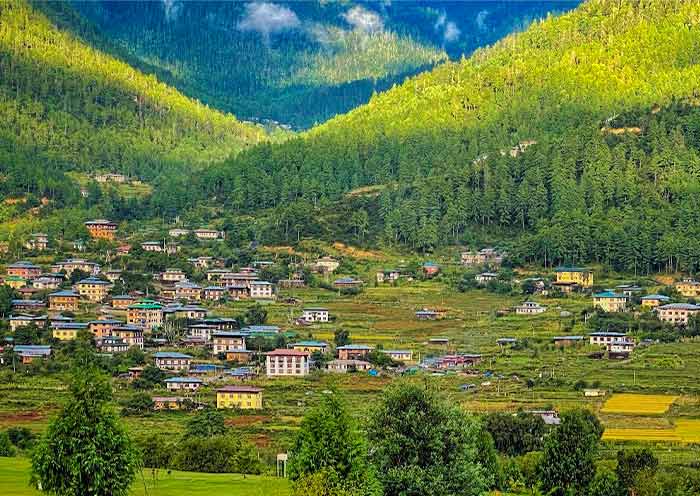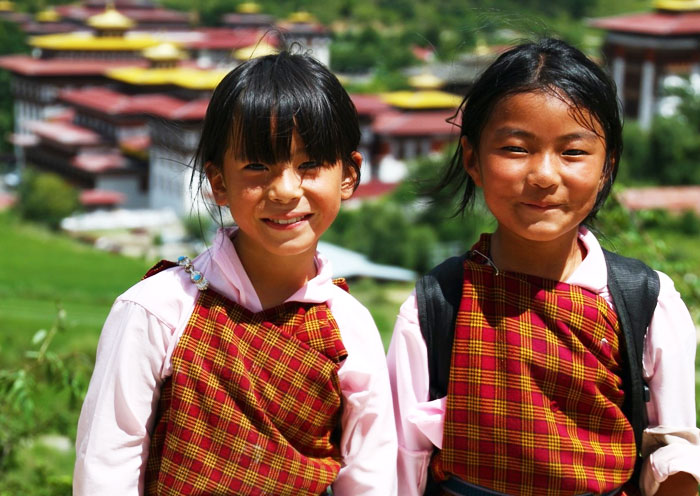- Highlights
- Itinerary
- Price
- Trip Notes
- Accommodation
- Photos
- Reviews
Our 6 Days Bhutan Essence Tour is the perfect choice for those who only have a 6-day holiday and wish to explore the essence of Bhutan all at once. This well-planned trip takes you to Western Bhutan's key destinations Paro, Thimphu, Punakha, and Phobjikha Valley, offering a unique blend of cultural immersion and natural exploration.
We will take you through the main cultural sights of Bhutan including majestic dzongs, serene monasteries, and ancient temples that stand as testaments to the spiritual and historical depth of this Himalayan kingdom. In Thimphu, stand in awe of the grand Buddha Dordenma Statue and the iconic Tashichho Dzong, and delve into Bhutanese craftsmanship at local schools and museums. Immerse yourself in local customs and traditions by donning traditional Bhutanese attire, trying your hand at archery, and savoring the unique flavors of Bhutanese cuisine. In Punakha, visit the beautiful Punakha Dzong and the sacred Chimi Lhakhang. In Paro, hike to the most dramatic monastery situated on a cliff - Tiger's Nest Monastery, and visit the oldest lhakhanks- Kyichu Lhakhang. These are the big sights that you simply can’t miss.
Your journey also takes you off the beaten path to the Phobjikha Valley, a pristine landscape known for its wide alpine wetland and stunning vistas. Bhutan is the world's only carbon-negative country with over 70% forest coverage. This place absorbs more carbon than it creates and Phobjikha Valley is perfect for trekkers, and nature-lovers. During the winter, this valley becomes the home of the rare black-necked cranes. Observing black-necked cranes, hiking in the forested valley, and breathing fresh air add extraordinary elements to your travel experience.
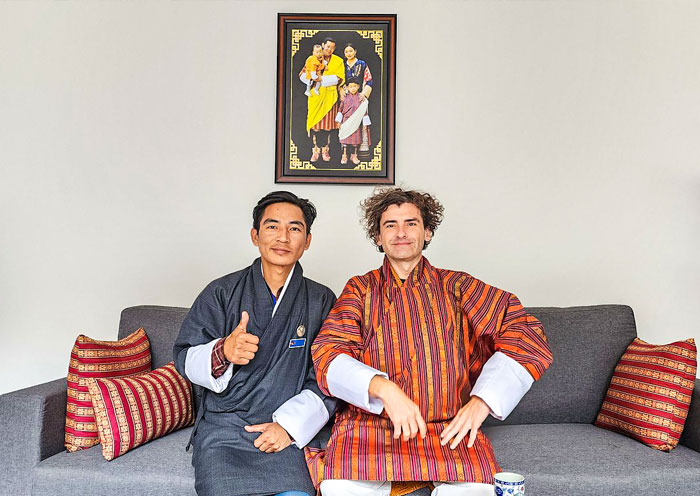
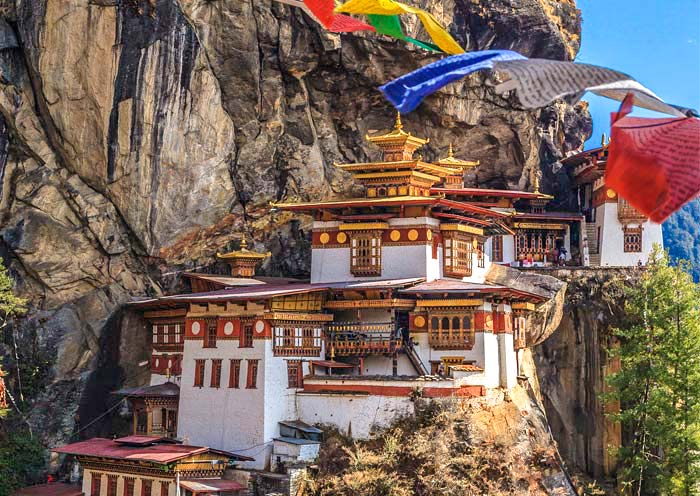
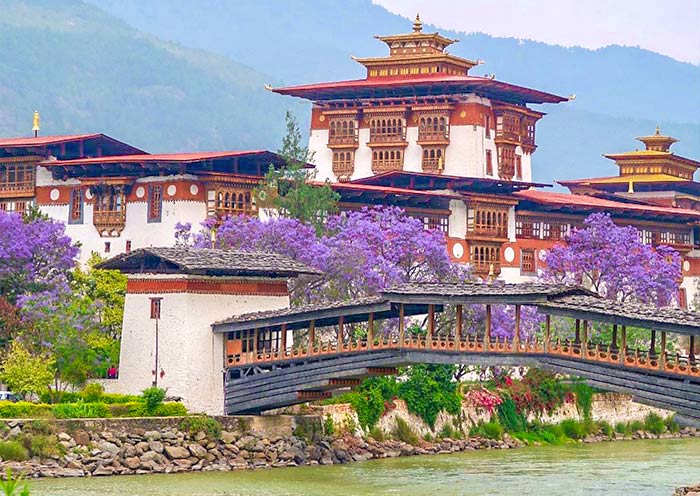
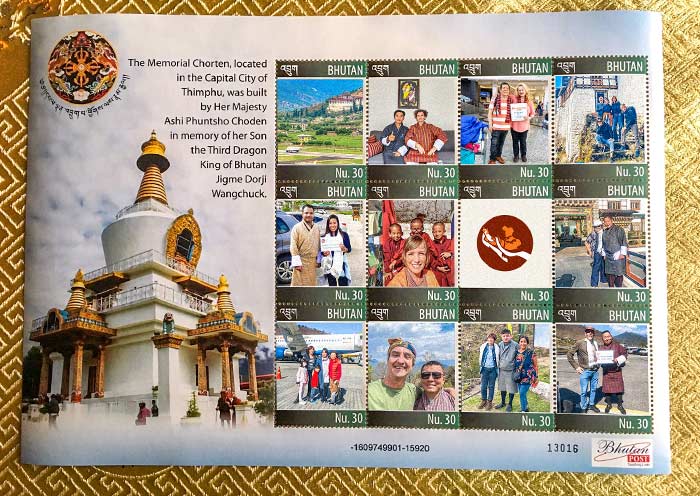
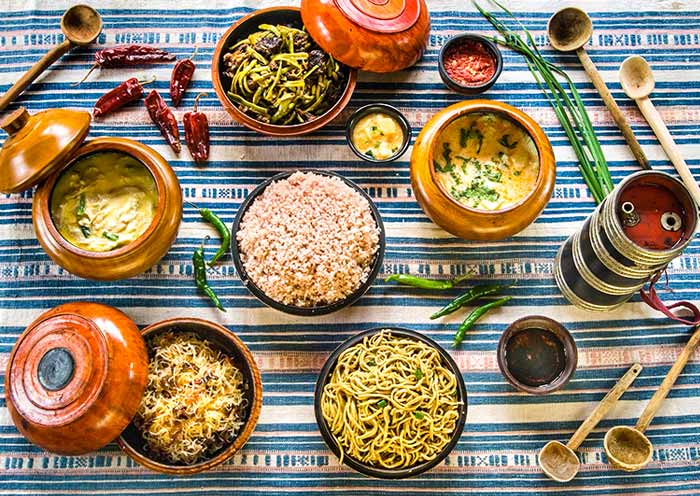
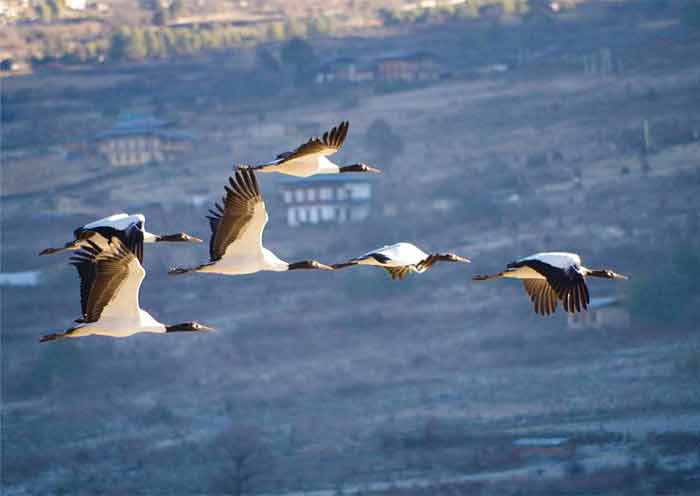
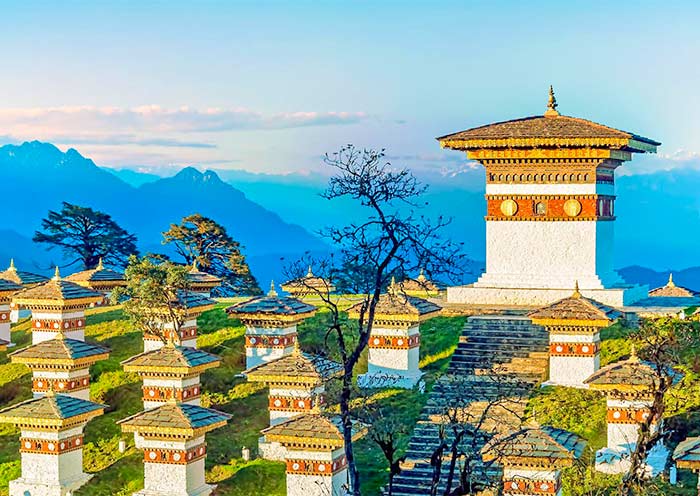
Itinerary at a Glance
Paro (2 Days)
Tiger's Nest Monastery, Kyichu Lhakhang
Thimphu (2 Days)
Buddha Dordenma Statue, National Memorial Chorten, Tashichho Dzong (Thimphu Dzong), Simply Bhutan Museum, Bhutan Post Office, School for Arts and Crafts, Dochula Pass
Gangtey (1 Day)
Gangtey Nature Trail, Gangtey Monastery, Black-Necked Cranes Information Center
Punakha (1 Day )
Chimi Lhakhang, Punakha Dzong, Punakha Suspension Bridge, Khamsum Yulley Namgyal Chorten Hike
Itinerary Day by Day
Kuzuzangpo la! Welcome to Bhutan, the Last Shangri La in Pristine Himalayan Kingdom. Take a deep breath and enjoy the refreshing breeze in the happy country where 71% of the land is covered with forests. Your guide and driver in Paro will greet you at Paro International Airport, Bhutan's only international airport.
Then, we will head to Thimphu, the capital city of Bhutan, which is approximately 50km away and takes about 1.5 hours to reach. Unlike many capital cities dominated by skyscrapers and heavy traffic, Thimphu doesn't have traffic lights or a railway system. Surrounded by rolling mountains, Thimphu is known for its picturesque scenery, Bhutanese dzong, Buddhist monuments, and traditional arts and crafts. Thimphu is committed to preserving its cultural heritage and natural environment while slowly embracing modernity. Once in Thimphu (2,340m), you can enjoy your exploration in Thimphu, including visiting the Buddha Dordenma Statue (Bhutan Point), the National Memorial Chorten, and Tashichho Dzong.
(Note: The coverage of attractions on the first day depends on your flight arrival time. If you arrive in the morning, you should be able to visit all of the sites listed below. If it is in the afternoon, we might adjusted one or two to the next day.)
On the way to Thimphu, you will not miss a stop at the Paro Airport Birds Eye View Point which is a great spot to enjoy a panorama view of Paro Airport, Rinpung Dzong (Paro Dzong), Bhutan National Museum (Ta Dzong), Paro Chu River, and the stunning Paro Valley itself. Don't forget to ask your guide for more fascinating information about this remarkable airport.
You will visit the iconic landmark of Thimphu city - the Buddha Point first. It is the largest sitting Shakyamuni statue in the world that completed in 2015. The statue embodies an ancient prophecy of radiating happiness and peace throughout the world. In addition to admiring its impressive height of 51.5 meters, constructed of bronze and gilded in gold, you will also be able to see 125,000 smaller Buddha statues placed within it. Moreover, from this vantage point, you can enjoy a magnificent view of the Thimphu Valley.
The National Memorial Chorten is the most visited landmark in Thimphu. Constructed in 1974 in memory of the Third King, His Majesty Jigme Dorji Wangchuk (known as the Father of Modern Bhutan), by his mother, it reflects the late king's vision of promoting world peace and prosperity. The Chorten follows a Tibetan-style architecture and is adorned with remarkable paintings and intricate sculptures. You can observe the traditional stupa design, featuring a pyramidal pillar topped with a crescent moon and sun.
Then, you should not miss the visit to Tashichho Dzong (Thimphu Dzong), which has served as the seat of the government since 1952. This magnificent fortress-like structure is located on the western bank of the Wang Chu River. It seamlessly integrates with the entire valley and stands as the ultimate center of power in Bhutan. It houses the offices of the current reigning monarch, the Fifth King (Jigme Khesar Namgyel Wangchuck), as well as the ministries of internal affairs and finance. Additionally, it serves as the residence of the spiritual leader of Bhutan, the Je Khenpo, and hosts the central religious institutions of the country. During the summer season, the Je Khenpo resides in the Thimphu Dzong, while in the winter season, they relocate to Punakha Dzong. Walking around the Dzong, you will discover that it is an impressively large structure surrounded by well-kept lawns and beautiful gardens. Tashichho Dzong has two main entrances. One entrance leads to the administrative section in the south, while the other, situated in the north, grants access to the monastic quarter where the Thimphu Tshechu Festival and masked dances are performed. Note: The tourist opening hours of Thimphu Dzong are from 5 PM to 6:30 on weekdays and from 10 AM to 4 PM on weekends. It is required to have a tour guide accompany you for a visit to the Dzongs. Before entering for a visit, security checks are conducted.
For dinner, you can enjoy a dinner with a Bhutan Culture Dance Show (optional). Afterward, you can check in at your cozy hotel in Thimphu, where you can rest and adjust to any time difference.
Arrival Ideas:
Bhutan is situated between Tibet in China to the north and India to the south. To reach Bhutan, you can either travel by air to Paro International Airport, the country's only international airport, or by land through the entry points of Phuentsholing or Gelephu from India. Bhutan's national carrier Druk Air, Bhutan Airlines, and other international airlines, operate regular flights to Paro from major cities like Delhi (India), Kolkata (India), Bagdogra (India), Gaya (India), Guwahati (India), Dhaka (Bangladesh), Bangkok (Thailand), Kathmandu (Nepal), and Changi (Singapore). There will be some charter flights to Paro from Hong Kong (China) and Kuala Lumpur (Malaysia), on a seasonal basis. Around 30,000 people arrive at Paro Airport every year.
Kind Reminds:
1.You can contact us to book your flight to Paro and land directly in Bhutan.
2.Visitors of all nationalities, except those from India (require a permit), require an E-visa (40USD/pax) before entering Bhutan. All nationalities are welcome to visit Bhutan, and there are no specific restrictions on granting visas to enter the country.
3.Visitors from India are able to apply for a permit but are required to hold an Indian passport or an Indian voter ID card.
4.Visitors from Bangladesh and the Maldives also require a visa, which can be applied for and approved in advance of travel or upon arrival in Bhutan.
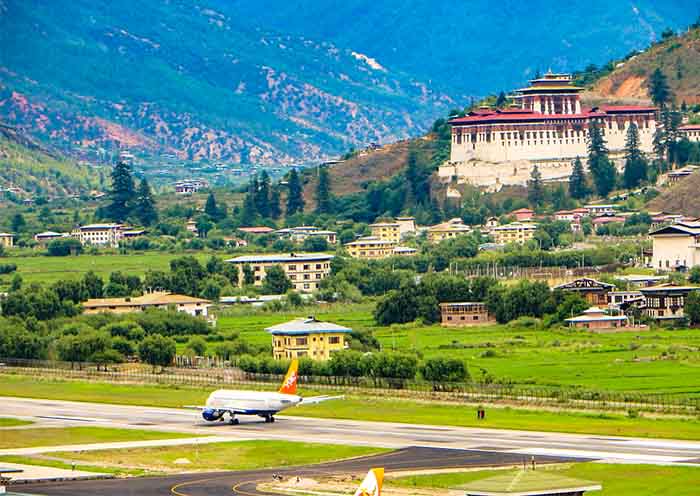
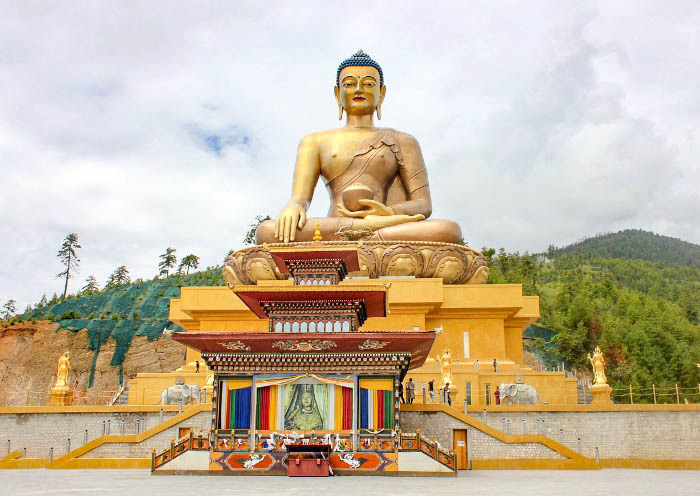
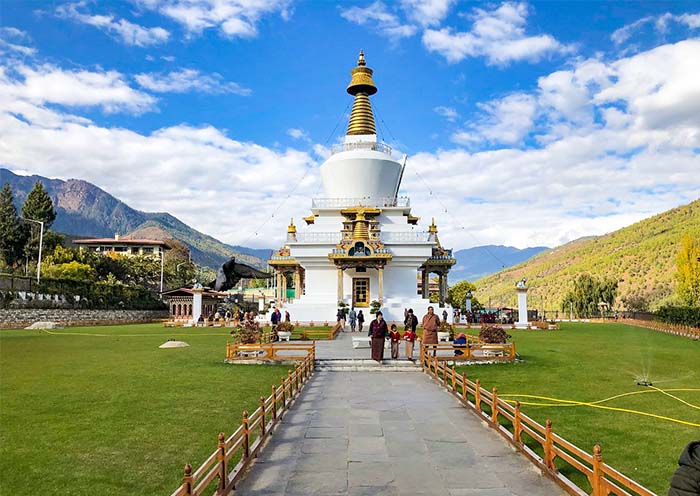
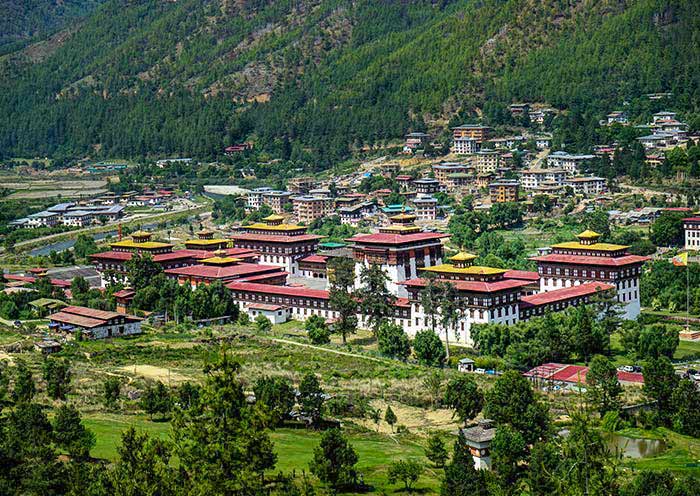
Today, you will go on a half-day tour of Thimphu. After that, leave Thimphu and drive approximately 135km (about 4.5 hours) into the countryside towards Gangtey (Phobjikha Valley), which is home to the rare black-necked cranes.
This morning, you can pay a visit to the Bhutan Post Office Headquarters (General Post Office) first for fully functional stamp printed with a self-portrait. This post office is known for housing the world's largest photo book and an intriguing collection of Bhutanese stamps. It is the only place where you can obtain personalized stamps featuring your own face. (Open hours for the post office: Weekdays: 9AM - 5PM; Saturdays: 9 AM - 1 PM; Closed on Sundays).
Then, you can visit School for Arts and Crafts, also known as the Thimphu National Institute for Zorig Chusum, and delight in the abundance of Bhutan's traditional arts and skills. This institution showcases the mastery of the country's 13 arts and crafts, offering a captivating experience of Bhutan's rich artistic heritage. Students here undergo rigorous training for 4-6 years, mastering the techniques and artistic nuances of their chosen craft. The 13 art forms are Traditional Painting, Sculpturing, Wood Carving, Calligraphy, Papermaking, Bronze Casting, Embroidery, Weaving, Carpentry, Masonry, Bamboo and cane weaving, Gold/Silver Smithy, and Black smithy.
Afterward, you can further explore the Simply Bhutan Museum. This interactive museum offers a glimpse into traditional Bhutanese life. You can touch and take pictures while witnessing the culture of Bhutan through household tools and other items of Bhutanese origin. Just follow the museum docent, who dresses up in traditional clothes, to try local rice wine, observe the traditional way of building houses out of rammed earth, sip local milk tea while enjoying Bhutanese songs and folk dances, and try archery, which is Bhutan's national sport. During your visit, you will have the opportunity to meet Pema Tshering, a talented craftsman. Despite being born with cerebral palsy and congenital deformities in his spinal column, he skillfully carves wood using his feet. The museum also features souvenir stalls and a restaurant that serves Bhutanese set meals.
Optional: If time permits and you have an interest in Bhutan's national animal, you can visit the Motithang Takin Preserve (self-pay for the admission fee). There, you can observe the unique creature that is said to have been created by the legendary Drukpa Kunley (Divine Madman). According to legend, Drukpa Kunley fashioned the takin with the head of a goat and the body of a cow.
In the afternoon, you will drive southeast to Gangety (135km, about 4.5 hours). Overnight in Gangtey and get ready for your next day's trip.

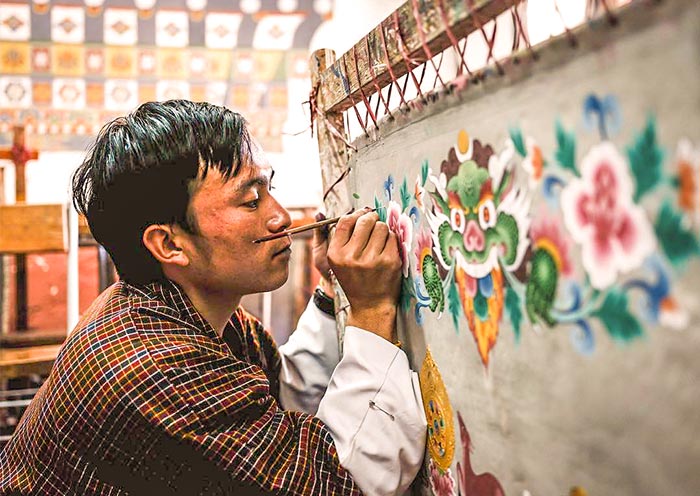

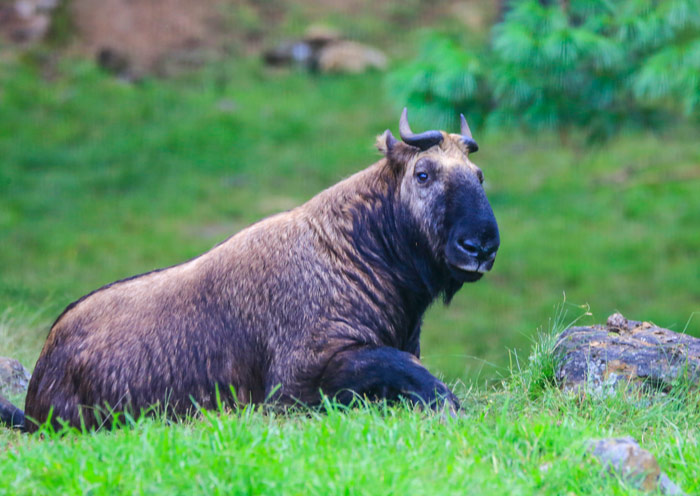
Phobjikha Valley is a U-shaped glacial valley on the western slopes of the Black Mountains, bordering the Jigme Singye Wangchuck National Park. The valley houses one of the impressive ancient Buddhist monasteries in Bhutan known as Gangtey Monastery, and as a result, some people refer to this entire region as Gangtey. Because of the large flock of black-necked cranes that winters here, it is one of the most important wildlife preserves in the country. It offers beautiful trails for hiking and nature walks, allowing visitors to experience its tranquility and natural beauty up close.
This morning, we will have a light hike on Gangtey Nature Trail (4km, 1.5-2 hours) that starts from Gangtey Monastery (3030m) and descends to Khewang Lhakhang (2850m). It is the most beautiful and shortest of the existing nature trails in Bhutan. You can immerse yourselves in the beauty of the Phobjikha Valley (2840m) with farmhouses, dense pine forests, rhododendron forests, and bamboo plants on foot and get a glimpse of the rural and pastoral lifestyle. During the winter (between late October and late February), it may be a bonus to see the rare and endangered Black-neck Cranes. Tips 1.Dress in layers and wear comfortable hiking shoes. The weather can change quickly in the mountains. 2. Respect wildlife and maintain the cleanliness of the trail.
Gangtey Monastery (Gangtey Goemba, Gangtey Gonpa) was first built in 1613 by Pema Thinley, the grandson, and re-embodiment of Pema Lingpa (the reincarnation of Guru Rinpoche, 1450-1521). It is a beautiful temple architecture that stands on the hilltop and is a great spot to view the picturesque Phobjikha Valley. The Monastery's history traces back to the prophecies made by the well-known Terton (treasure finder) Pema Lingpa in the late 15th century that a goemba (monastery) named gang-teng (hilltop) would be built on this site and that his teachings would spread from here. Now the Monastery is one of the main seats of the religious tradition based on Pema Lingpa's revelations and one of the two main centres of the Nyingmapa school of Buddhism in the country. It is said that on arrival in the Phobjikha Valley in the last week of October, the black-necked cranes circle the Gangteng Monastery three times and also repeat the process while returning to Tibet. Bhutanese have great respect for these “heavenly birds”. Each year on Nov. 11, the Black-necked Crane Festival with local songs, dramas, and masked dances is held at the courtyard of Gangtey Goemba to celebrate the arrival of the endangered bird migrating from the Tibetan Plateau.
At the end of the trail, you will find Khewang Lhakhang, located on the east side of the Phobjikha valley. This 15th-century temple is one of the oldest in the valley and it showcases three impressive two-storey statues of the past, present, and future Buddhas (dusum sangay).
Afterwards, we will drive to the Black-necked Cranes Information Center, which has informative displays about the black-necked cranes and the valley environment. You can enter the observation room and use the telescope and spotting scopes to watch the Black-necked crane (Grus nigricollis). Every year (Oct. to Feb.), over 300 cranes migrate from Tibet to Bhutan for their winter months in Phobjikha Valley. It has been helpful for the center to protect and conserve the Black-necked crane and its species since 2003. It is a nice place to know more about the cranes and study their behavior.
After that, drive to Punakha (75 km, about 2.5 hours). Along the way, you will pass near the village of Sopsokha, where a visit to Chimi Lhakhang is highly recommended. Here, you can witness the unusual traditional and cultural ceremonies. Reaching the monastery involves a short and delightful walk across rice paddies and through a small settlement of painted houses and lots of little craft shops. Constructed by the cousin of Drukpa Kunley, the temple was built to commemorate the victory of Drukpa Kunley (Mad Saint & Divine Madman) over the demon of Dochu La using his "magic thunderbolt of wisdom "(phallus). That is why you can see the symbol of the phallus scattered throughout. Chime Lhakhang is renowned as a sanctuary of fertility, and many childless women sought blessings from the lamas at the monastery. It is believed that these couples often find success in conceiving soon after their visit. If you are lucky, you may encounter the monks there blessing pilgrims or women who wish to conceive by tapping their heads with a 25cm wooden phallus. In Bhutan, it is common for local people to utilize the phallus symbol to ward off the evil eye and deter malicious gossip.
Overnight in Punakha and get ready for your next day's trip.
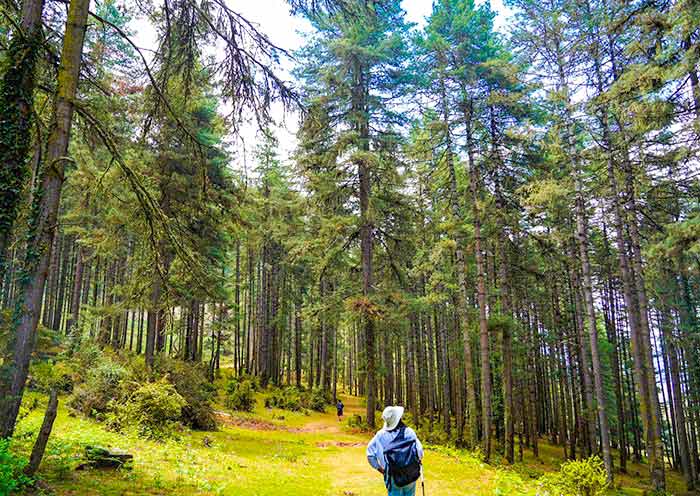
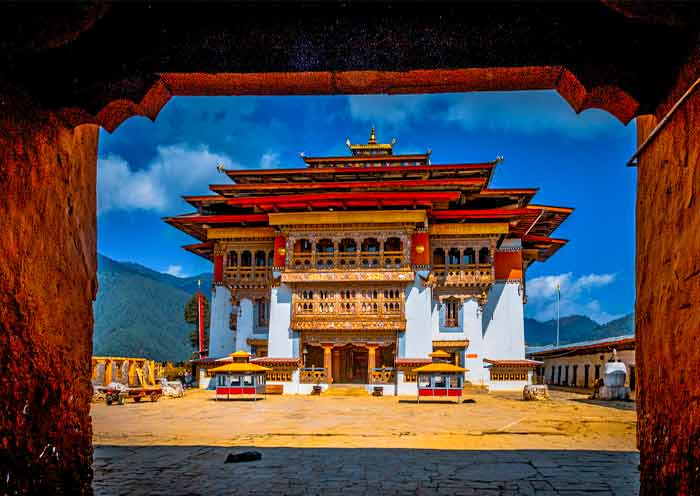
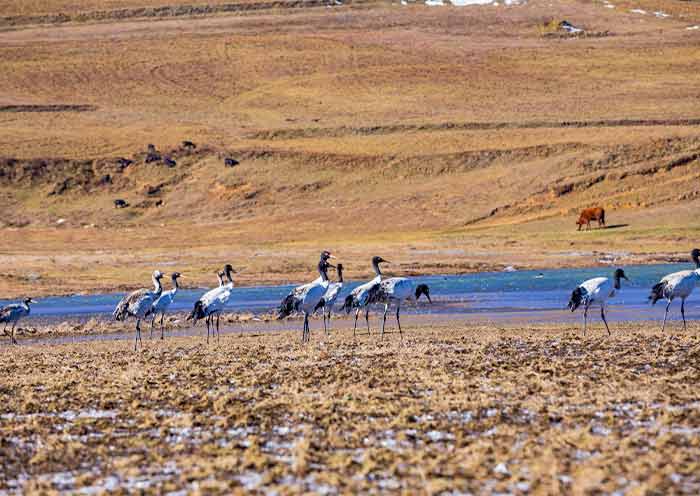
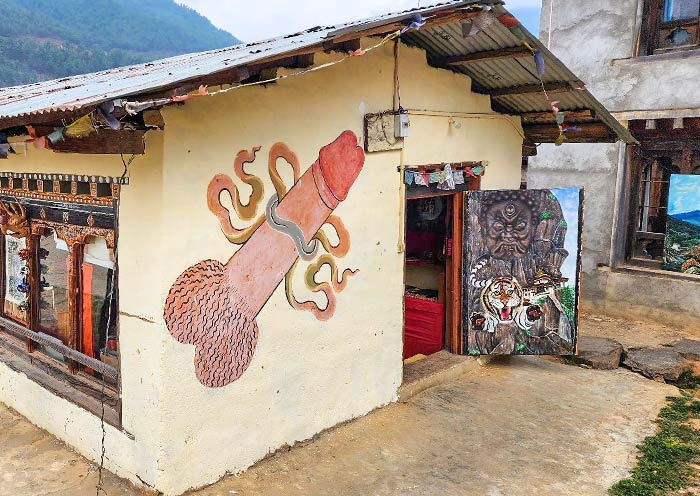
Punakha lies in a warm, fertile, and stunningly beautiful valley at the confluence of the Mo Chhu (Mother River) and Pho Chhu Rivers (Father River). Commanding the river junction is the gorgeous Punakha Dzong, perhaps Bhutan’s most impressive building. Today, you will first visit Punakha Dzong, which is arguably the most beautiful dzong in the country, especially in spring when the lilac-colored jacaranda trees bring a lush sensuality to the dzong’s characteristically towering whitewashed walls. Occasionally, you'll spot monks draped in red robes passing by, occasionally echoing rhythmic sounds of their chanting and prayer.
Punakha Dzong, the second oldest and second largest Dzong in Bhutan serving administrative and monastic functions holds a legendary tale. It is said that Guru Rinpoche (Padmasambhava) prophesied the arrival of a person named Namgyal built a Dzong on a hill resembling an elephant. In 1637, Shabdrung Ngawang Namgyel, the unifier of Bhutan, received a divine vision guiding him to construct a Dzong at this site. The Dzong was played as the administrative center and the seat of the Bhutanese officials till the capital city was moved from Punakha to Thimphu in 1955. All of Bhutan’s kings have been crowned here and In 2011, the Dzong bore witness to the royal wedding ceremony of His Majesty Jigme Namgyel Wangchuck, the 5th King of Bhutan, as he married Queen Jetsun Pema. Now, the Dzong serves as the winter residence for Je Khenpo (head abbot of Bhutan), as well as about 1,000 monks.
After crossing the Bazam Bridge, you can walk inside the Punakha Dzong and take your time to admire this stunning example of Bhutanese Dzong architecture which was built of stone, pounded mud, and a considerable amount of timber (without nails, written plans, or designs). There is a six-story central tower called utse standing in the yard of the Punakha Dzong. As the highest architecture within the Dzong, utse houses the most sacred temples and shrines and contains important religious artifacts, thangkas, statues, and texts. This Dzong has three docheys (courtyards) instead of the usual two. The first (northern) courtyard is for administrative functions and houses a huge white Victory Chorten and Bodhi tree. The second courtyard houses the monastic quarters and is separated from the first by the utse. In this courtyard, there are two halls; one of Ugyen Wangchuck (the King of Bhutan) and another hall where the King was decorated in 1905 with the Order of the Knight Commander of the Indian Empire by John Claude White. In the third (southernmost) courtyard is the temple where the remains of the Pema Lingpa (a treasure revealer, Five Terton Kings) and Shabdrung (founder of Tshechu Festival and Bhutan National Dress) are preserved. At the south end, there is the kunrey, or "hundred-pillar" assembly hall with exceptional murals that depict the life of Buddha. If you visit during the Punakha Tshechu Festival, you can enjoy the mesmerizing masked dances and witness the exhibition of a large thangka depicting the Zhabdrung (Shabdrung, the father of Bhutan) once a year. You can have fun with locals who flood here dressed in Bhutan’s national attire, with men wearing Gho and women wearing Kira. Optional activity: You have options to go rafting in the Po Chu and Mo Chu rivers, offering unique views of the Dzong not possible from land.
After exploring the Punakha Dzong, your journey continues with an opportunity to cross Punakha Suspension Bridge, one of Bhutan’s longest pedestrian suspension bridges over the Po Chhu River. By walking across this 160-meter suspension bridge, you will be treated to breathtaking views of the lush Punakha Valley and the glacier-fed Po Chhu River below. Upon crossing the bridge, you will walk alongside terraced rice paddies and up a trail to Khamsum Yulley Namgyal Chorten, perched on a beautiful ridge above the Punakha valley. It should take an hour or less to reach the chorten.You may see farmers working the fields by hand or with the assistance of an ox and plow.
The Khamsum Yulley Namgyal Chorten (Stupa) was built in 1990 by the Queen Mother, Ashi Tsering Yangdon Wangchuck, who is the mother of the 5th King Jigme Khesar Namgyel Wangchuck. The purpose of its construction was to ward off evil forces and bring peace to Bhutan and the world. Unlike typical stupas, the Khamsum Yulley Namgyal Chorten is dedicated to the protective deities in Bhutanese culture. Each floor of the chorten pays tribute to different protective deities. This chorten exemplifies a harmonious blend of Bhutanese art, architecture, and traditions. It took Bhutanese carpenters, painters, and sculptors 9 years to complete this distinctive Bhutan-style pagoda. Inside Khamsum Yulley, you can admire the sculptures, and as you continue climbing the steep stairs, you will reach the top level. From there, you can venture onto the roof of Khamsum Yulley Namgyal Chorten and enjoy expansive views of the Punakha. The landscape undergoes a dramatic transformation with the changing seasons, with lush green rice paddies in the summer transforming into captivating golden fields in the autumn.
After, you will drive to Paro (110 KM, about 3.5hrs). En route, you will make a brief stop at Dochula Pass ( 3,120m ), renowned as one of the most beautiful mountain passes in Bhutan. If weather permits, you will be treated to a breathtaking panoramic view of the Himalayas, including Bhutan’s highest mountain peak, Mt. Gangkar Puensum (7,570m). At the Dochu La Pass summit, you will encounter the 108 memorial chortens (Buddhist shrines), known as Druk Wangyal Khang Zhang Chortens, were constructed as a memorial to honor the Bhutanese soldiers who lost their lives in the battle against Assamese insurgents from India, and also as an offering for global peace.
And stay overnight in Paro.
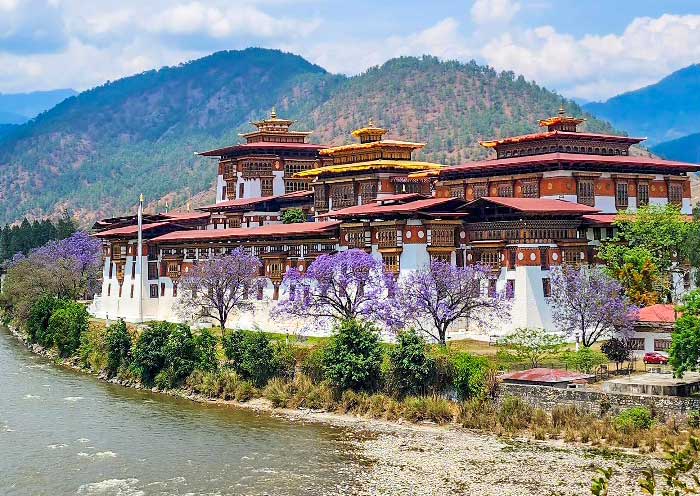
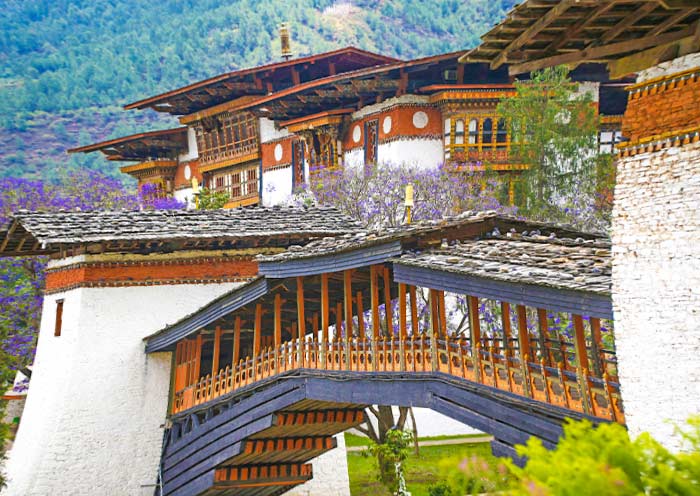
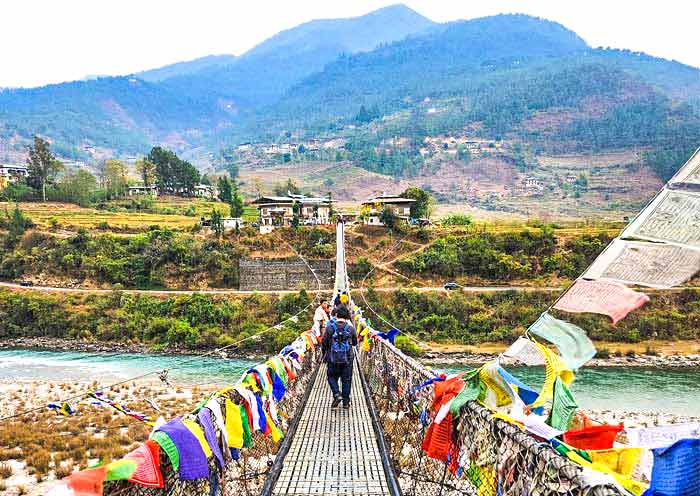
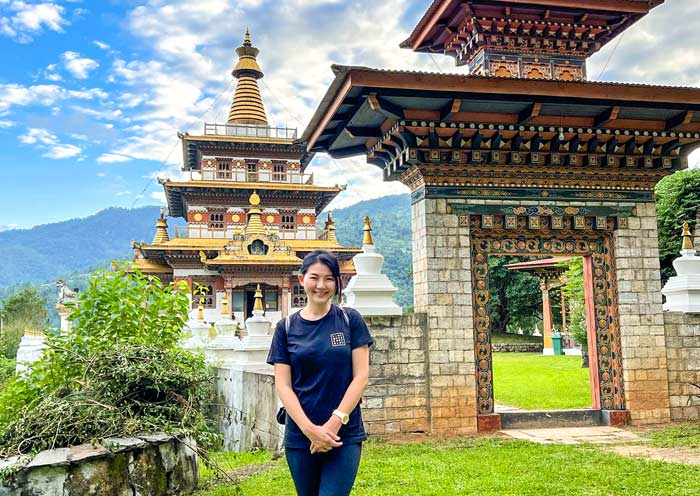
This morning, you will enjoy the exciting hiking tour to Tiger's Nest, the landmark of Bhutan and the most famous holy monastery in the country. It is about a 12km drive (over 0.5 hours) from Paro City to the start point of the Tiger's Nest hike route.
Usually, it may take about 2.5 hours to reach Tiger's Nest Monastery (Paro Taktsang) on foot. The entire Tiger's Nest Hike takes around 5 to 6 hours, with about 4.8km of uphill trekking and about 4.8km of downhill walking. You have the option to rent a horse at the designated place if you prefer. Riding a horse (self-payment required) takes about 1.5 hours to reach the halfway point on the mountainside. From there, you need to say goodbye to your horse and hike for another 1.5 hours to reach the Tiger's Nest Monastery. At the halfway point, there is a Taktsang Cafeteria where you can have a buffet lunch and enjoy coffee and tea. What is more, it is the first viewpoint where you can look up Tiger's Nest Monastery, the incredible religious site of Buddhists. As the viewing position ascends, the outline of Tiger's Nest Monastery becomes increasingly clear. On the journey ahead, you can enjoy the hike in Bhutan’s forest and will see more and more prayer flags and prayer wheels, left behind by the Bhutanese people who come here to worship. You will also have a panoramic view of the beautiful Paro Valley below. If you visit in April, you will have the opportunity to see the high-altitude rhododendrons blooming, creating a stunning display of red clouds amidst the mountains.
Then, you will stand right opposite the Taktsang Goemba (Tiger's Nest Monastery) and admire Bhutan's most iconic cultural landmark, which is renowned as one of the world's top ten super monasteries. The Tiger's Nest (3,120m) is situated on the side of a cliff at a height of 900m above the Paro Valley (2,270m). According to legend, the Indian sage Guru Padmasambhava (Guru Rimpoche, the founder of the Nyingma school of Tibetan Buddhism and the builder of the first monastery in Tibet - Samye Monastery) arrived at the location of Tiger's Nest Monastery in the 8th century. It is said that he rode a tigress and subdued demons before spending 3 months meditating in the mountain caves here. This eventually led to the formation of the present-day Tiger's Nest Monastery. Throughout history, this place has been considered a sacred site by Buddhist luminaries. However, it wasn't until 1692 that the current structure of Tiger's Nest Monastery took shape. In 1998, a devastating fire caused significant damage, but it was reconstructed in 2005, closely resembling the original architectural design. If you are interested you can hike into the monastery to explore more (no photo inside). Today, Tiger's Nest Monastery, one of the most visited tourist attractions in Bhutan, is revered as the holiest pilgrimage site for Bhutanese people to visit at least once in a lifetime.
After completing the Tiger's Nest hike, you will proceed to Drukgyal Dzong, where you will have the opportunity to catch a glimpse of Mount Jomolhari (7,570m). Known as the "Mountain Goddess" and the tallest mountain in Bhutan, Mt Jomolhari is considered a sacred abode for deities and spirits, earning the title of "Sacred Mountain". Know as the Fortress of the Victorious Drukpa, Drukgyal Dzong was believed to have been built in 1646 by Zhabdrung Ngawang Namgyal who is the unifier and founder of the Bhutanese nation-state. The building was used as an administrative center until 1951 when a fire caused by a butter lamp destroyed it. In April 2016, to celebrate the birth of the Dragon Prince, Gyalsey His Royal Highness Jigme Namgyel Wangchuck, as well as to commemorate the arrival of Zhabdrung Ngawang Namgyel to Bhutan in 1616 AD and the birth year of Guru Rinpoche, then Prime Minister Tshering Tobgay announced that the dzong will be restored and reinstated to its former glory upon the command of His Majesty King Jigme Khesar.
Then, it is time to visit Kyichu Lhakhang, also known as the Temple of the Thousand-armed and Thousand-eyed Avalokiteshvara. It is one of the 108 Buddhist temples built by King Songtsen Gampo in the 7th century (around 659 AD), and it is believed to have been constructed to subdue the left leg of the Tibetan witch. Kyichu Lhakhang is also one of the oldest Tibetan Buddhist temples in Bhutan and serves as a venue for important celebrations of the Bhutanese royal family. In the main hall of Kyichu Lhakhang, you can see the revered statue of an eight-year-old Shakyamuni Buddha, believed to have been created during the same period as the Jowo statue in the Jokhang Temple in Lhasa, Tibet. It is considered a national treasure of the Kingdom of Bhutan. Apart from housing many precious historical artifacts and Buddhist scriptures, the temple also enshrines the relic stupa of Dilgo Khyentse Rinpoche (1910-1991), a renowned master of the Nyingma tradition. Additionally, there is a piece of iron chain forged by Tangtong Gyalpo, who was the former head of the four major Tibetan Buddhist schools and is known as the Iron Bridge Living Buddha and the father of Tibetan opera.
If time permits and you are interested, you can also visit a local farmhouse, which provides a fascinating glimpse into the lifestyle of a farmer. Finally, head back to Paro for an overnight stay.
Optional Bhutan Paro Experiences:
1. Bhutan Traditional Hot Stone Bath (1 hour).
2. Lighting butter lamps for blessings at Kyichu Lhakhang (108 lamps).
3. Try Bhutan's national game - Archery, which is the favorite pastime for Bhutanese people.
Kind Reminds:
1. The best time to visit Tiger's Nest is from March to May and from October to December. After noon, the monastery will be hidden in the shadow of the cliffs, so it's recommended to depart early if you want to capture good photos.
2. Tiger's Nest offers horse riding services to go uphill, but the horse ride is only available up to a designated point. From there, you still need to hike to reach the monastery. When descending, you must walk the entire way as horse riding services are not provided.
3. Mobile phones and backpacks are not allowed inside Tiger's Nest Monastery. Personal belongings can be stored at the entrance. If you wish to light butter lamps, make sure to have some cash ready before storing your belongings.
4. Along the way, you may encounter stray dogs. Please be mindful, give them space, and avoid disturbing them.
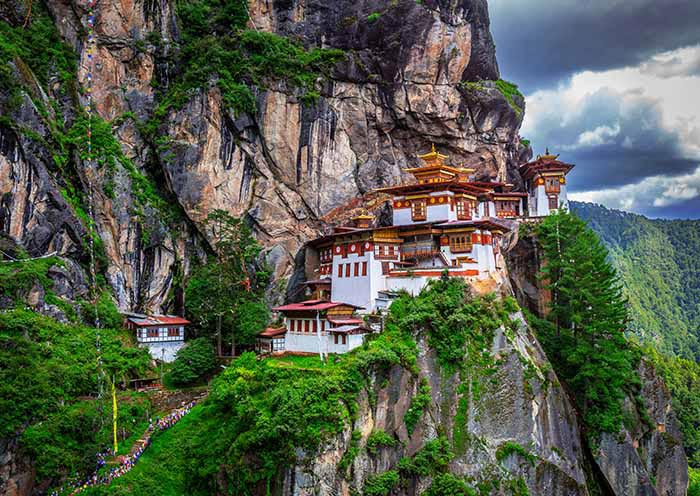
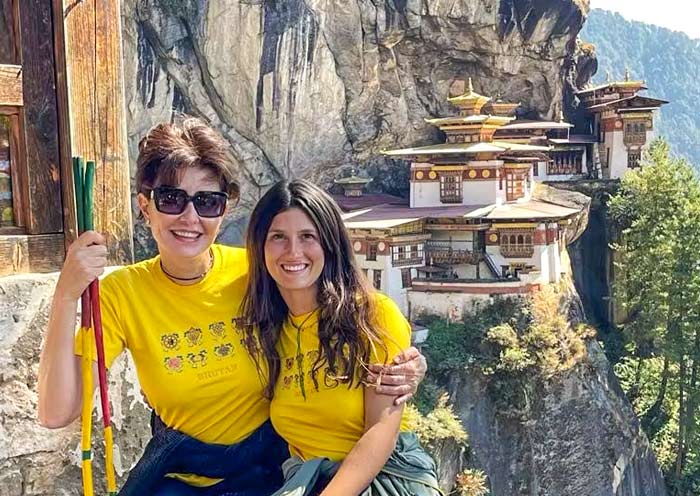
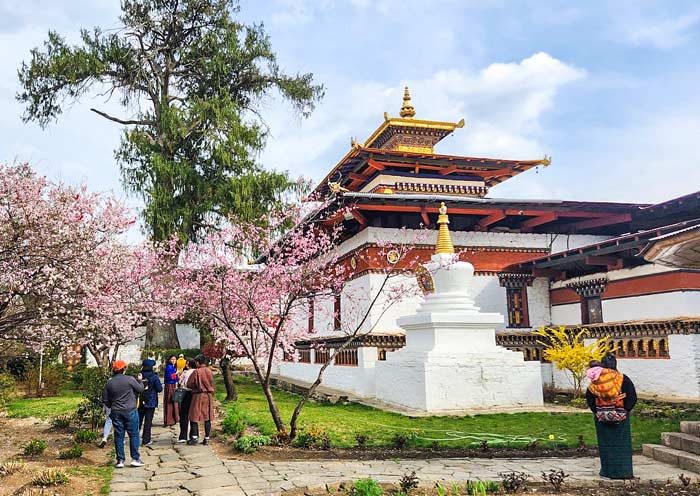
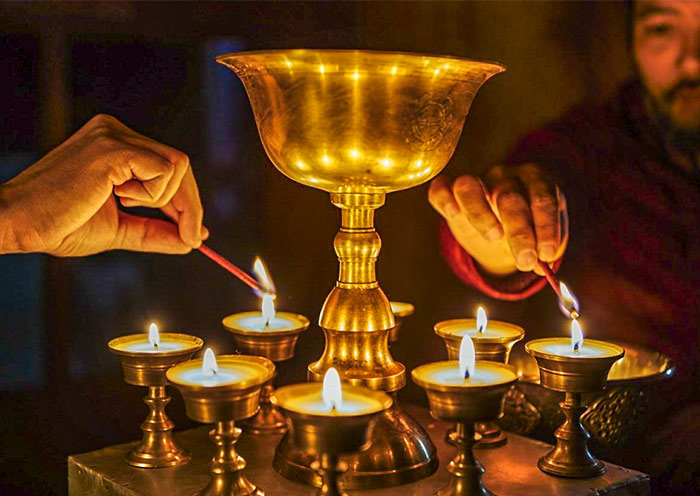
Happiness is a place, wish you had gotten your happiness philosophy from the beautiful Himalayan country with us. It is time to end your 6-day Bhutan Tour. Your guide will escort you to Paro International Airport for your flight to your next destination.
Optional Attractions:
If your flight is scheduled to depart in the afternoon, you have the option to ask your tour guide to arrange visits to the Paro Dzong and Bhutan National Museum (self-pay for the admission fee).
Paro Dzong (Rinpung Dzong) is a magnificent fortress stands tall and proud, serving as a beacon of history and culture in Bhutan. Rinpung Dzong was constructed in 1646 by Shabdrung Ngawang Namgyal (1594-1651), a pivotal figure in Bhutanese history who is revered as the founder of the modern Bhutanese state and a national hero. His enduring legacy continues to shape the country's identity and cultural landscape. Located near the pristine Paro Chu River, Paro Dzong can be accessed via a traditional wooden cantilever bridge, providing you breathtaking panoramic views of the enchanting Paro Valley.
If you hike a little further, you will reach the Bhutan National Museum (Ta Dzong), which holds the distinction of being Bhutan's tallest building. Originally constructed in 1649 as a watchtower overlooking the Paro Dzong, it was later transformed into the National Museum of Bhutan in 1968. At the museum, you can immerse yourself in a rich collection of ancient artifacts such as pottery, armor, thangkas, masks, stamps, photographs, statues, costumes, relics, stone axes, and religious paintings.
Extension Ideas:
1.If you prefer to travel longer in Bhutan, you can extend your trip to other highlighted parts of Bhutan, such as Haa, and Bumthang.
2.If you plan to continue exploring neighboring countries in Southeast Asia, the Himalaya countries, or Asia, such as Thailand, Nepal, India, or China, don't hesitate to let us know. We can customize your itinerary and assist with travel arrangements.
Thank you for choosing Asia Odyssey Travel (AOT) for your Bhutan tour, we are always here working for you and hope to see you again for your next trip to Asia. Safe journey!
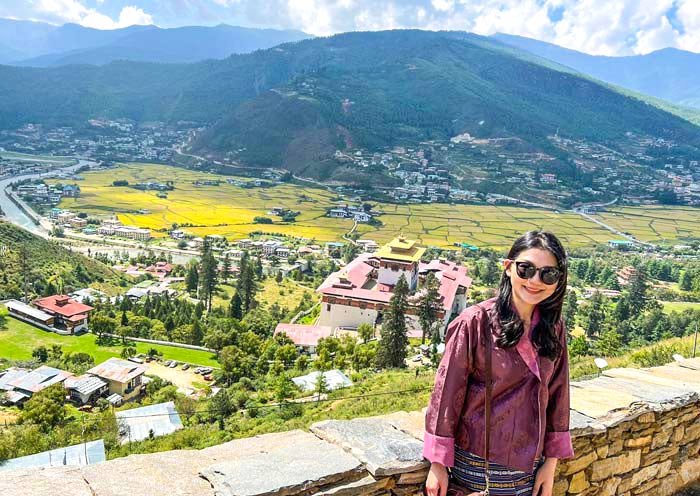
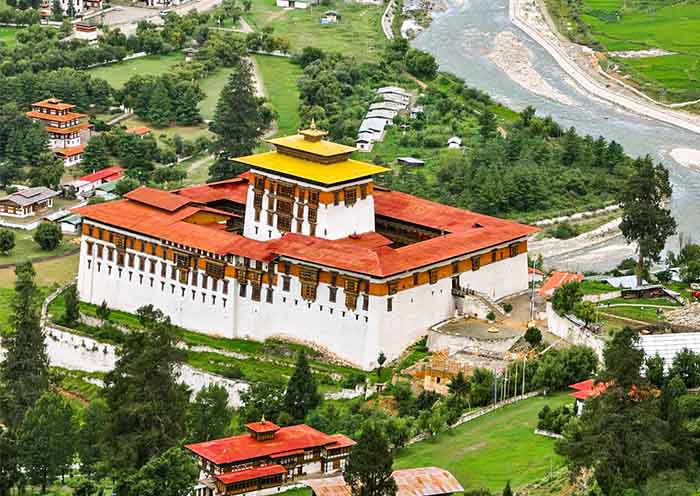
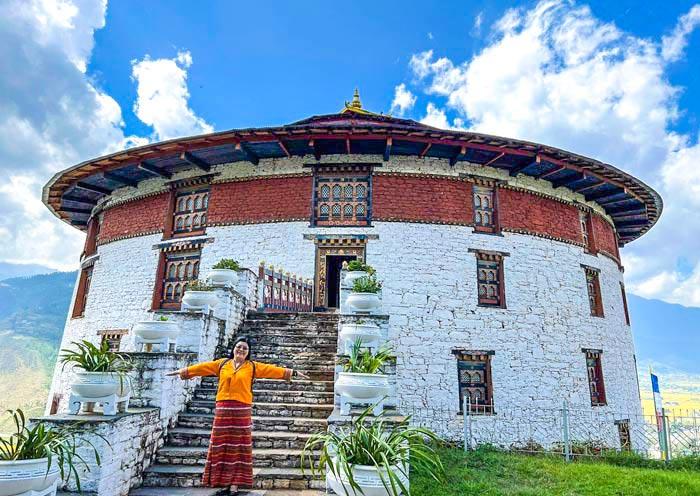
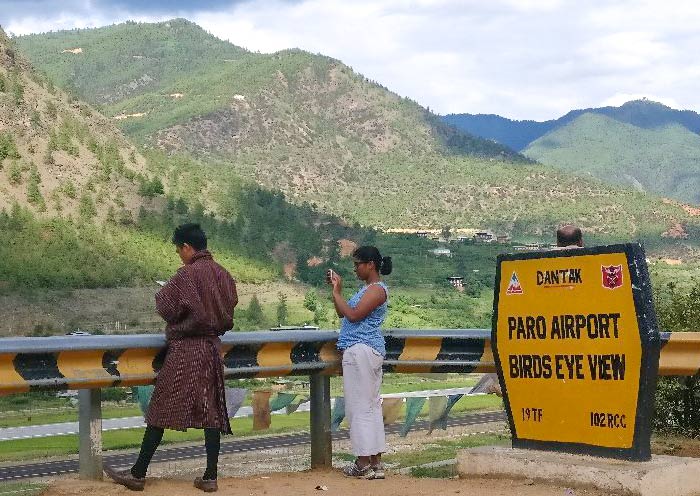
Price: What’s Included & What’s Excluded
What’s Included:
What’s Excluded:
Important Travel Tips for Visiting Bhutan
Please note that full payment of the tour fee is required 30 days before the departure date. The tour fee should be transferred to the account of the Royal Bank of Bhutan. Once the payment is received, the Bhutanese government will process your visa.
A Bhutan Group Tour typically involves traveling with a group of 1 to 12 travelers. During the tour, you will follow a set schedule and participate in activities as planned by us. The hotel arrangements for Group Tours in Bhutan are based on a 3-star level, making them more budget-friendly compared to private tours. We offer 9 group tours ranging from 4 to 11 days in duration.
On the other hand, a Bhutan Private Tour is designed to cater to your specific preferences and requirements. With a Private Tour, you have greater control over the itinerary, allowing you to customize it according to your interests and preferred pace. Additionally, you can choose the hotel condition, whether it be luxury or budget, based on your preferences. We offer Bhutan private tours with different themes, and you can choose from tours lasting 3 to 11 days.
The ideal seasons for traveling in Bhutan are from March to November, when the weather is most suitable for visitors. During the off-peak season, which lasts from December to February, it is winter in Bhutan. Daytime temperatures hover around 15 degrees Celsius, and at night, they drop below freezing. From June to September, it is the summer and rainy season, with daytime temperatures around 23 degrees Celsius and nighttime temperatures around 15 degrees Celsius.
On the other hand, the peak travel periods are from March to May and from September to November.
Bhutanese cuisine prominently features chili as its main ingredient, with most dishes incorporating cheese, potatoes, and chili. Vegetables primarily consist of legumes and tubers. If you have any dietary restrictions or special meal requirements, please inform us during the tour registration process so that we can make appropriate meal arrangements.
In the Paro region of Bhutan, staple foods include rice, buckwheat, corn, and red rice. Chili and dairy products are commonly used as accompaniments. One of the most famous traditional dishes is Ema Datshi, which consists of chili with cheese. While beef, lamb, and pork are popular meats, it's important to note that Bhutan follows Buddhist principles of non-violence and does not slaughter animals within the country. Most of the meat available in the market is imported from neighboring India and primarily caters to tourists. Beverage options include black tea, butter tea, rice wine, and beer.
Hotel Conditions for Your Bhutan Tour
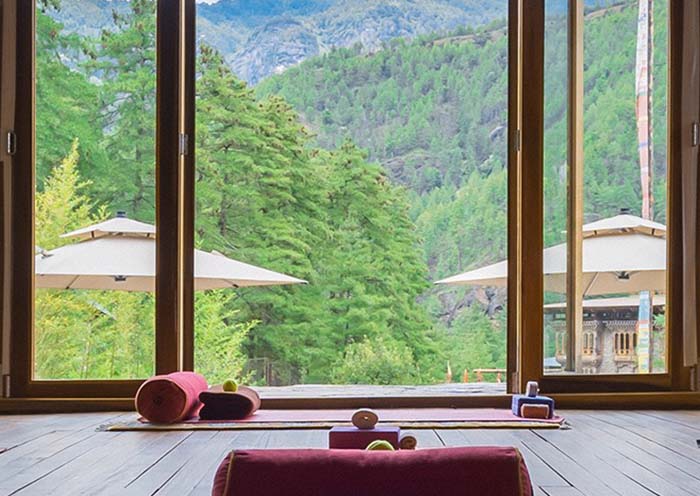

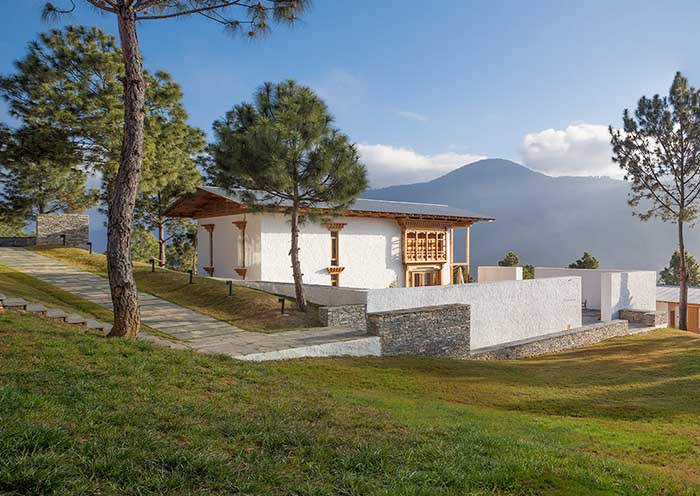
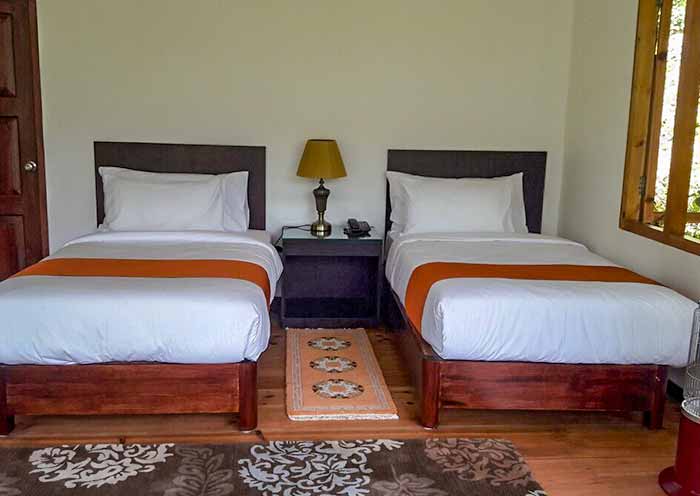
In Paro, Thimphu, Punakha and other destinations in Bhutan, there are several well-positioned 4-star hotels that offer convenient access to popular attractions and ensure a comfortable stay.
1. Upgrading Hotel Accommodation: If you desire a higher standard of accommodation, our travel experts can provide you with alternative pricing options for hotel upgrades. Whether you prefer a more luxurious experience or have specific preferences, the experts will assist you in making the best choice to suit your needs.
2. Check-In and Check-Out Times: Check-in time for the hotels is generally after 14:00 (2:00 PM), allowing you to settle in and freshen up before starting your Bhutanese adventure. On the day of departure, please check out before 12:00 noon to ensure a smooth transition and allow time for the hotel staff to prepare for incoming guests.
Photo Gallery for This Itinerary
Latest Bhutan Tours Reviews from Our Customers

cindy heng
Malaysia
Date of Experience: Sep 07, 2025
Tour Customized by: Abby
You May be Interested in This Tour: Customized Tour

mui m
Vietnam
Highly recommend Asia Odyssey - they planned a fantastic itinerary against our brief for Tibet, Nepal, and Bhutan. Special shoutout to Ms. Mandy who planned our trip, answered all our questions, was incredibly responsive, and was always helpful. She checked in during our trip to make sure we were okay as well. On our trip, our local guides were knowledgeable and kind and our accommodation was comfortable. All-in-all a fantastic experience and highly recommended.
Thank you for a wonderful experience!!
Destination(s): Tibet
Date of Experience: Jun 05, 2025
Tour Customized by: Mandy
You May be Interested in This Tour: Customized Tour

Bhawani Thangaratnam
Malaysia
Date of Experience: Aug 31, 2025
Tour Customized by: Steven
You May be Interested in This Tour: Customized Tour
Price: Request
(Based on a private tour for two people. Price varies depending on program, travel date, number of people.)
Free Enquiry! You don’t need to pay for the reservation.
- United States (+1)
- Australia (+61)
- Singapore (+65)
- Malaysia (+60)
- Philippines (+63)
- Canada (+1)
- Italy (+39)
- Indonesia (+62)
- United Kingdom (+44)
- Spain (+34)
- Mexico (+52)
- Hong Kong (+852)
- Thailand (+66)
- United Arab Emirates (+971)
- New Zealand (+64)
- South Africa (+27)
- Germany (+49)
- Brazil (+55)
- India (+91)
- France (+33)
- Vietnam (+84)
- The Netherlands (+31)
- Saudi Arabia (+966)
- Ireland (+353)
- Argentina (+54)
- Switzerland (+41)
- Romania (+40)
- Pakistan (+92)
- Japan (+81)
- Portugal (+351)
- Bangladesh (+880)
- South Korea (+82)
- Puerto Rico (+1)
- Türkiye (+90)
- China (+86)
- Belgium (+32)
- Qatar (+974)
- Greece (+30)
- Taiwan (+886)
- Austria (+43)
- Poland (+48)
- Israel (+972)
- Chile (+56)
- Sri Lanka (+94)
- Nigeria (+234)
- Peru (+51)
- Colombia (+57)
- Hungary (+36)
- Nepal (+977)
- Denmark (+45)
- Bulgaria (+359)
- Norway (+47)
- Slovenia (+383)
- Sweden (+46)
- Kuwait (+965)
- Costa Rica (+506)
- Ecuador (+593)
- Venezuela (+58)
- Malta (+356)
- Croatia (+385)
- Tunisia (+216)
- Czechia (+420)
- Mongolia (+976)
- Bahrain (+973)
- Mauritius (+230)
- Papua New Guinea (+675)
- Cambodia (+855)
- Dominican Republic (+1)
- Luxembourg (+352)
- Finland (+358)
- Guatemala (+502)
- Myanmar (+95)
- Maldives (+960)
- Slovakia (+421)
- Laos (+856)
- Serbia (+381)
- Brunei (+673)
- Oman (+968)
- Macao (+853)
- Panama (+507)
- Morocco (+212)
- Jordan (+962)
- Georgia (+995)
- Fiji (+679)
- Bolivia (+591)
- Lithuania (+370)
- Bahamas (+1)
- Cyprus (+357)
- Latvia (+371)
- Bhutan (+975)
- Iraq (+964)
- Iran (+98)
- Kenya (+254)
- Jamaica (+1)
- Zimbabwe (+263)
- Azerbaijan (+994)
- Uruguay (+598)
- Estonia (+372)
- Andorra (+376)
- Cameroon (+237)
- Ghana (+233)
- Kazakhstan (+7)
- Nicaragua (+505)
- Egypt (+20)
- Russia (+7)
- Albania (+355)
- Réunion (+262)
- Montenegro (+382)
- Algeria (+213)
- Afghanistan (+93)
- Martinique (+596)
- Uganda (+256)
- Honduras (+504)
- North Macedonia (+389)
- Trinidad and Tobago (+1)
- Suriname (+597)
- Antigua and Barbuda (+1)
- Zambia (+260)
- Ukraine (+380)
- Armenia (+374)
- Barbados (+1)
- Belarus (+375)
- Palestine (+970)
- Lesotho (+266)
- Moldova (+373)
- Ethiopia (+251)
- French Polynesia (+689)
- Gambia (+220)
- Guam (+1)
- Gibraltar (+350)
- Isle of Man (+44)
- New Caledonia (+687)
- El Salvador (+503)
- Comoros (+269)
- Seychelles (+248)
- Chad (+235)
- Samoa (+685)
- Cook Islands (+682)
- Palau (+680)
- Paraguay (+595)
- DR Congo (+243)
- Solomon Islands (+677)

